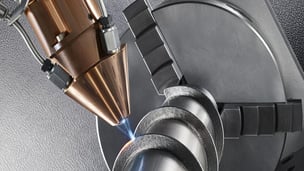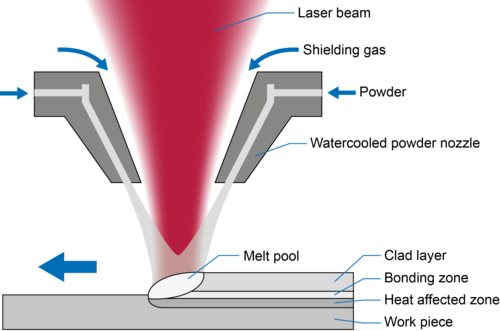
We're back this week discussing the bright future of the laser industry. While, last week we took a look at pivotal role of laser technology in the growth of the e-mobility sector, this week we are going to be delving into additive manufacturing.
Additive manufacturing (AM) is a unique tool which forms part of an ever expanding set of manufacturing processes, more commonly known as 3D printing. AM is the process by which a 3D object is built from the bottom up through depositing very thin layers of material, one at a time. Whereas traditional methods of manufacturing involve taking material away (subtractive manufacturing) from a base object, AM takes a digital layout and converts it directly into a physical object. Now, we know that this sounds really cool, but how exactly do lasers play a part in this process?
How does it work?
Laser Additive Manufacturing (LAM) specifically involves the use of a high-power laser to fuse, or sinter, metallic powders together. The space in which these powders are sintered is determined digitially by a 3D model. As each layer is added and sintered, the powder is heated to just below full-melting point, allowing the metal to liquify and then return to a solid state relatively quickly. Here is a diagram:

What is LAM used for?
At the moment, the most common utilisation of LAM is for rapid prototype development. It is also used for small batch production and limited-run manufacturing, as well as the rapid manufacturing of small tools, jigs and fixtures. However, perhaps the coolest application of LAM is biomedical; the production of prosthetics and implants as well as instruments for surgery. Researchers are also using LAM to produce scaffolds for bone regeneration, and are attempting to utilise the technology to print cells for biological tissue, working towards the capacity to print fully functioning organs.
Benefits of LAM
If the use of lasers in additive manufacturing didn't sound cool enough already, there are some seriously impressive benefits to its utilisation:
- LAM allows for the build of complex and intricate shapes, that subtractive
manufacturing methods would struggle to achieve.
- Works with a wide range of materials; plastics, concrete, metals, glass, food and biological tissue.
- It is also possible to manufacture hollow parts, quickly and more cost-effectively.
- No joins are needed, which results in more aesthetically pleasing finishes
- In turn, a lack of joins produces stronger products with a reduced likelihood of repairs being needed.
- LAM allows for small-batch production and limited-run manufacturing, which would otherwise be difficult to justify resources for.
- All of the above, coupled with the fact that no tools are required, mean that LAM is a highly cost-effective manufacturing process; less materials, less manpower, less waste, less time required. Just more precision.
One thing is for certain, the future manufacturing technologies is very exciting, and lasers will no doubt play a pivotal role in their development. Next week, this blog series will be taking a dive into laser technology and the world of Artificial Intelligence. Watch this space.
Are you enjoying our blog series? If so, let us know in the comments below!




